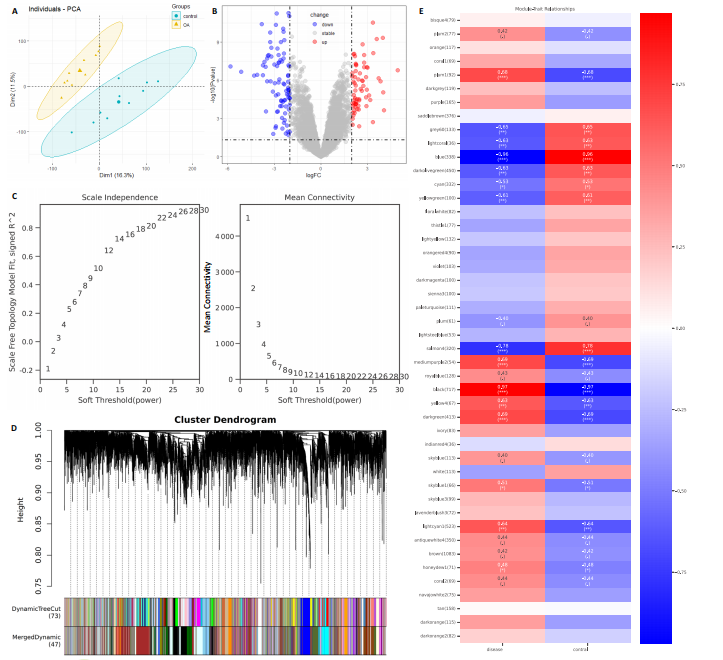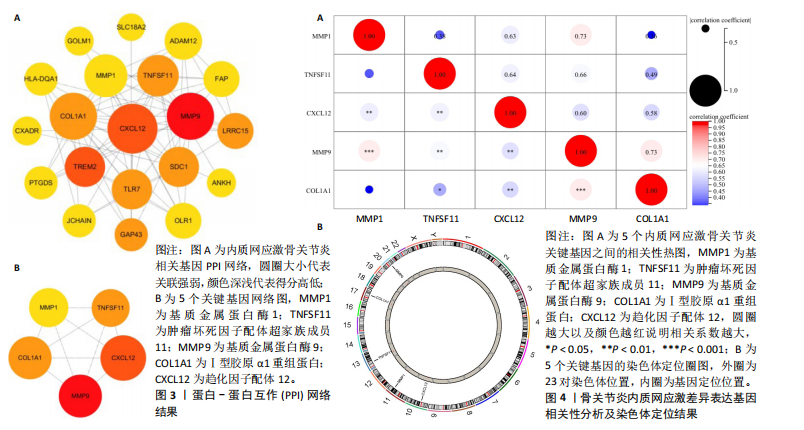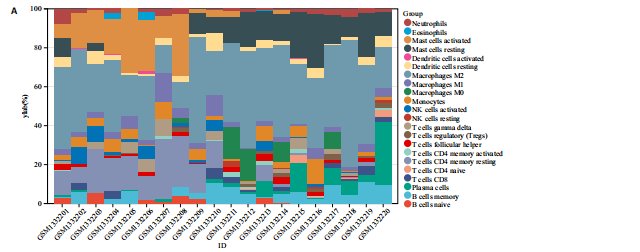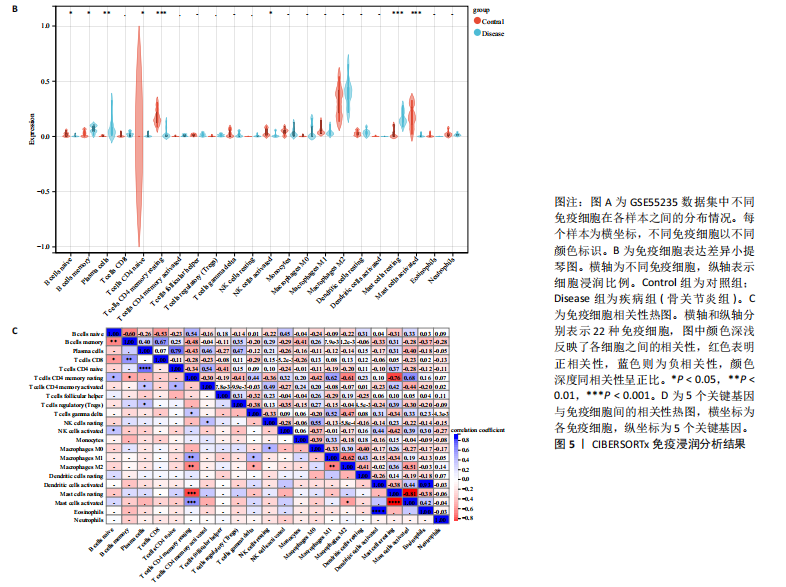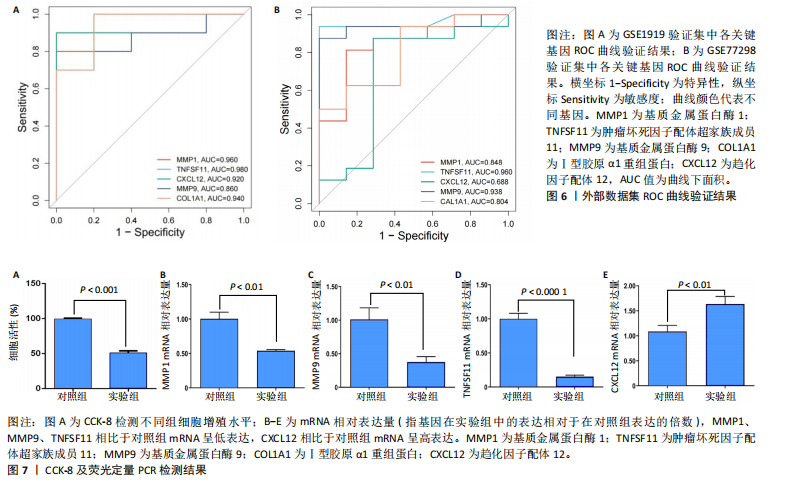[1] HUNTER DJ, MARCH L, CHEW M. Osteoarthritis in 2020 and beyond: a Lancet Commission. Lancet. 2020;396(10264): 1711-1172.
[2] ABRAMOFF B, CALDERA FE. Osteoarthritis: pathology, diagnosis, and treatment options. Med Clin North Am. 2020;104(2):293-311.
[3] DENG H, CHEN Z, KANG J, et al. The mediating role of synovitis in meniscus pathology and knee osteoarthritis radiographic progression. Sci Rep. 2024; 14(1):12335.
[4] ZOU Z, LI H, YU K, et al. The potential role of synovial cells in the progression and treatment of osteoarthritis. Exploration. 2023;3(5):20220132.
[5] SADIA K, ASHRAF MZ, MISHRA A. Therapeutic role of sirtuins targeting unfolded protein response, coagulation, and inflammation in hypoxia-induced thrombosis. Front. Physiol. 2021;12:733453.
[6] IYER S, ADAMS DJ. Bone and the unfolded protein response: in sickness and in health. Calcif Tissue Int. 2023;113(1):96-109.
[7] LI Q, WEN Y, WANG L, et al. Hyperglycemia-induced accumulation of advanced glycosylation end products in fibroblast-like synoviocytes promotes knee osteoarthritis. Exp Mol Med. 2021;53(11):1735-1747.
[8] 赵千增,赵振群,刘万林.激素性股骨头缺血坏死过程中内质网应激调控自噬与凋亡的作用[J].中国组织工程研究,2021, 25(29):4685-4690.
[9] WANG C, XU S, SUN D, et al. ActivePPI: quantifying protein-protein interaction network activity with Markov random fields. Bioinformatics. 2023;39(9):btad567.
[10] FAN X, YUAN J, XIE J, et al. Long non-protein coding RNA DANCR functions as a competing endogenous RNA to regulate osteoarthritis progression via miR-577/SphK2 axis. Biochem Biophys Res Commun. 2018;500(3):658-664.
[11] CUI Z, CUI Y, ZANG T, et al. interacCircos: an R package based on JavaScript libraries for the generation of interactive circos plots. Bioinformatics. 2021;37(20):3642-3644.
[12] STEEN CB, LIU CL, ALIZADEH AA, et al. Profiling cell type abundance and expression in bulk tissues with CIBERSORTx. Methods Mol Biol. 2020;2117:135-157.
[13] 付金乐.脂多糖对人滑膜细胞增殖过程中MAPK途径作用机制的研究[D].武汉:武汉大学,2016.
[14] YANG T, YANG G, WANG G, et al. Bioinformatics identification and integrative analysis of ferroptosis-related key lncRNAs in patients with osteoarthritis. Biosci Rep. 2023;43(9):BSR20230255.
[15] LI Q, TANG X, LI W. Potential diagnostic markers and biological mechanism for osteoarthritis with obesity based on bioinformatics analysis. PLoS One. 2023; 18(12):e0296033.
[16] RAHMATI M, MOOSAVI MA, MCDERMOTT MF. ER stress: a therapeutic target in rheumatoid arthritis? Trends Pharmacol. Sci. 2018;39(7):610-623.
[17] WU H, MENG Z, JIAO Y, et al. The endoplasmic reticulum stress induced by tunicamycin affects the viability and autophagy activity of chondrocytes. J Clin Lab Anal. 2020;34(10):e23437.
[18] LIU C, CAO Y, YANG X, et al. Tauroursodeoxycholic acid suppresses endoplasmic reticulum stress in the chondrocytes of patients with osteoarthritis. Int J Mol Med. 2015;36(4):1081-1087.
[19] ZHANG Y, LIU D, VITHRAN DTA, et al. CC chemokines and receptors in osteoarthritis: new insights and potential targets. Arthritis Res Ther. 2023;25(1):113.
[20] BRYLKA LJ, SCHINKE T. Chemokines in physiological and pathological bone remodeling. Front Immunol. 2019;10:2182.
[21] OKAMURA Y, MISHIMA S, KASHIWAKURA JI, et al. The dual regulation of substance P-mediated inflammation via human synovial mast cells in rheumatoid arthritis. Allergol Int. 2017;66s:S9-S20.
[22] MUSTONEN AM, NIEMINEN P. Fatty acids and oxylipins in osteoarthritis and rheumatoid arthritis-a complex field with significant potential for future treatments. Curr Rheumatol Rep. 2021;23(6):41.
[23] MALEMUD C J. Matrix metalloproteinases and synovial joint pathology. Prog Mol Biol Transl Sci. 2017;148:305-325.
[24] KUMAR S, KUMAR H, MITTAL A, et al. Correlation between synovial fluid levels of matrix metalloproteinase’s (MMP-1, MMP-3, and MMP-9) and TNF-α with the severity of osteoarthritis knee in rural indian population. Indian J Orthop. 2023;57(10):1659-1666.
[25] ZENG GQ, CHEN AB, LI W, et al. High MMP-1, MMP-2, and MMP-9 protein levels in osteoarthritis. Genet Mol Res. 2015;14(4): 14811-14822.
[26] HE L, KANG Q, CHAN KI, et al. The immunomodulatory role of matrix metalloproteinases in colitis-associated cancer. Front Immunol. 2022;13:1093990.
[27] BASSIOUNI W, VALENCIA R, MAHMUD Z, et al. Matrix metalloproteinase-2 proteolyzes mitofusin-2 and impairs mitochondrial function during myocardial ischemia-reperfusion injury. Basic Res Cardiol. 2023;118(1):29.
[28] SINGH S, JINDAL D, KHANNA R. Can serum MMP-3 diagnose early knee osteoarthritis? J Orthop. 2023;38:42-46.
[29] WYATT LA, NWOSU LN, WILSON D, et al. Molecular expression patterns in the synovium and their association with advanced symptomatic knee osteoarthritis. Osteoarthr Cartil. 2019;27(4):667-675.
[30] WU Y, TANG Y, ZHANG X, et al. MMP-1 promotes osteogenic differentiation of human bone marrow mesenchymal stem cells via the JNK and ERK pathway. Int J Biochem Cell Biol. 2020;129:105880.
[31] WANG Y, ZHANG T, XU Y, et al. Suppressing phosphoinositide-specific phospholipases Cγ1 promotes mineralization of osteoarthritic subchondral bone osteoblasts via increasing autophagy, thereby ameliorating articular cartilage degeneration. Bone. 2022;154:116262.
[32] BOLLMANN M, PINNO K, EHNOLD LI, et al. MMP-9 mediated Syndecan-4 shedding correlates with osteoarthritis severity. Osteoarthr. Cartil. 2021;29(2):280-289.
[33] UDAGAWA N, KOIDE M, NAKAMURA M, et al. Osteoclast differentiation by RANKL and OPG signaling pathways. J Bone Miner Metab. 2021;39(1):19-26.
[34] KOVáCS B, VAJDA E, NAGY EE. Regulatory effects and interactions of the wnt and opg-rankl-rank signaling at the bone-cartilage interface in osteoarthritis. Int J Mol Sci. 2019;20(18):4653.
[35] YUE Z, NIU X, YUAN Z, et al. RSPO2 and RANKL signal through LGR4 to regulate osteoclastic premetastatic niche formation and bone metastasis. J Clin Invest. 2022; 132(2):e144579.
[36] LI J, JIANG M, YU Z, et al. Artemisinin relieves osteoarthritis by activating mitochondrial autophagy through reducing TNFSF11 expression and inhibiting PI3K/AKT/mTOR signaling in cartilage. Cell Mol Biol Lett. 2022;27(1):62.
[37] CHEN P, TAO J, ZHU S, et al. Radially oriented collagen scaffold with SDF-1 promotes osteochondral repair by facilitating cell homing. Biomaterials. 2015;39:114-123.
[38] CHEN X, LIANG XM, ZHENG J, et al. Stromal cell-derived factor-1α regulates chondrogenic differentiation via activation of the Wnt/β-catenin pathway in mesenchymal stem cells. World J Stem Cells. 2023;15(5):490-501.
[39] LIN C, LIU L, ZENG C, et al. Activation of mTORC1 in subchondral bone preosteoblasts promotes osteoarthritis by stimulating bone sclerosis and secretion of CXCL12. Bone Res. 2019;7:5.
[40] THOMSON A, HILKENS CMU. Synovial macrophages in osteoarthritis: the key to understanding pathogenesis? Front Immunol. 2021;12:678757.
[41] WU CL, HARASYMOWICZ NS, KLIMAK MA, et al. The role of macrophages in osteoarthritis and cartilage repair. Osteoarthr Cartil. 2020;28(5):544-554.
[42] KRIEGOVA E, MANUKYAN G, MIKULKOVA Z, et al. Gender-related differences observed among immune cells in synovial fluid in knee osteoarthritis. Osteoarthr Cartil. 2018; 26(9):1247-1256.
[43] WARMINK K, RIOS JL, VARDERIDOU-MINASIAN S, et al. Mesenchymal stem/stromal cells-derived extracellular vesicles as a potentially more beneficial therapeutic strategy than MSC-based treatment in a mild metabolic osteoarthritis model. Stem Cell Res Ther. 2023;14(1):137. |
